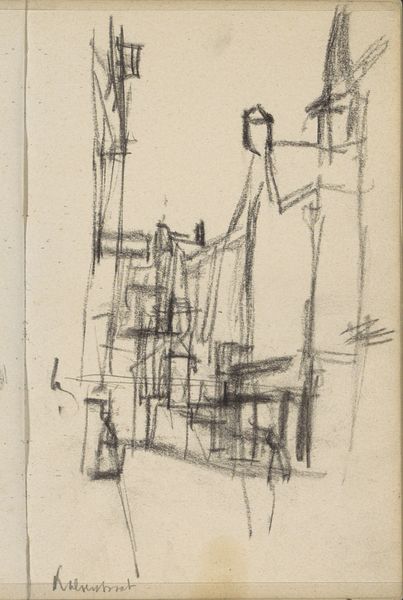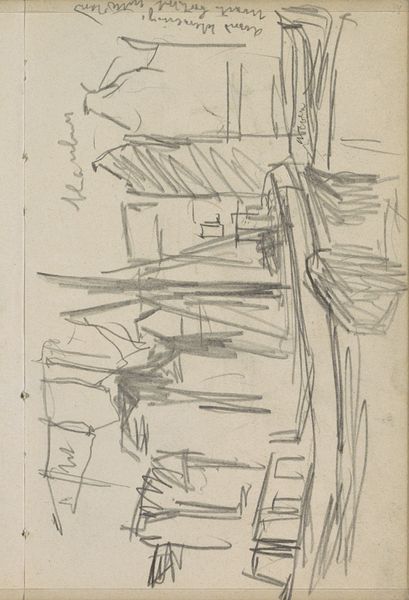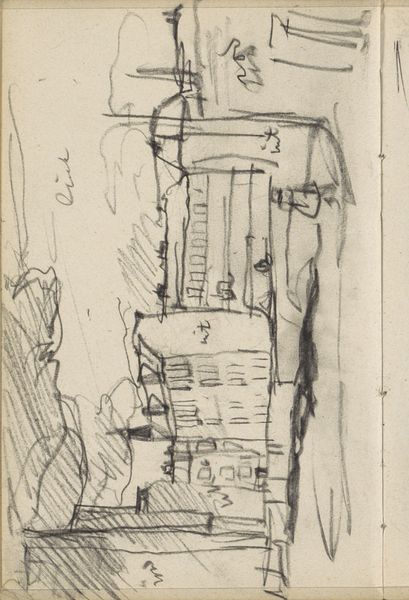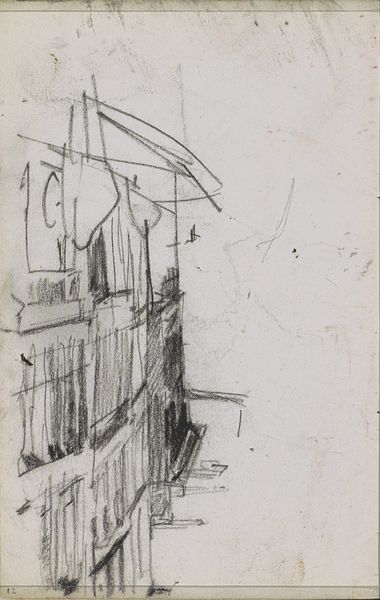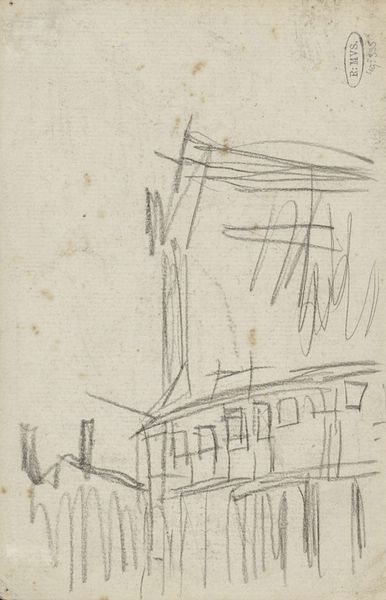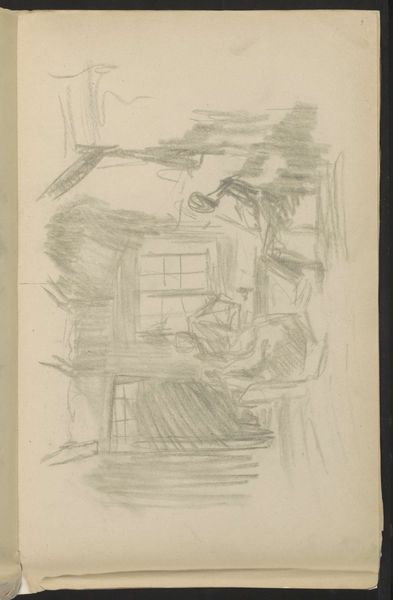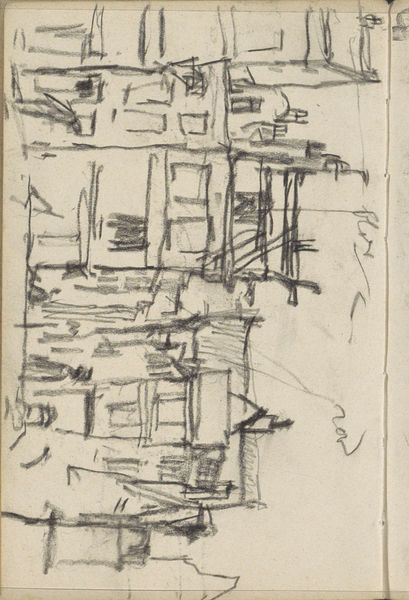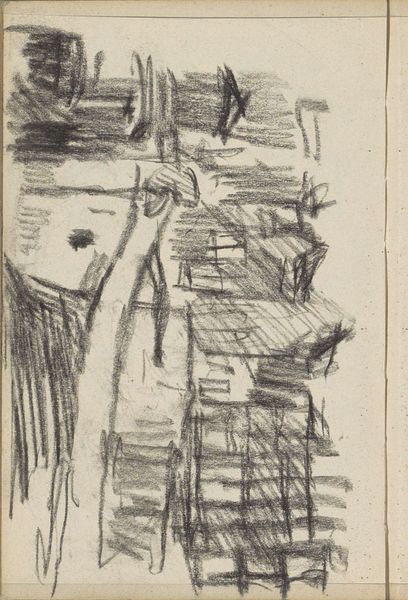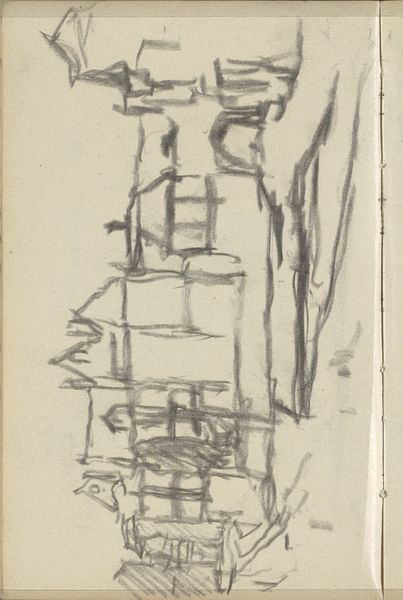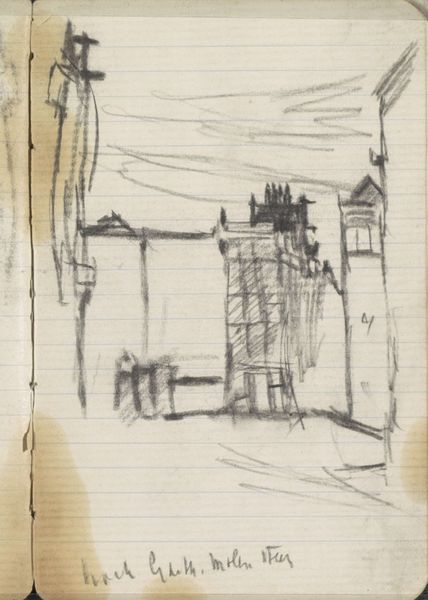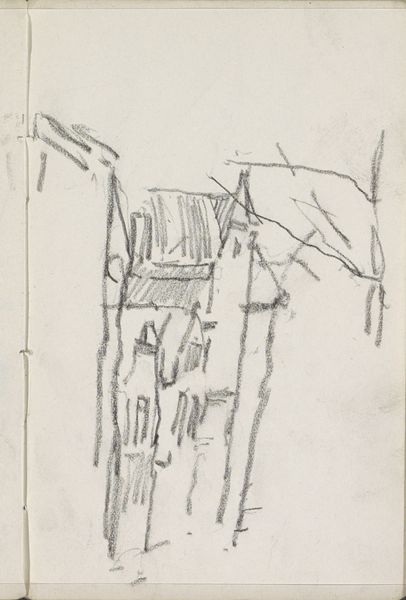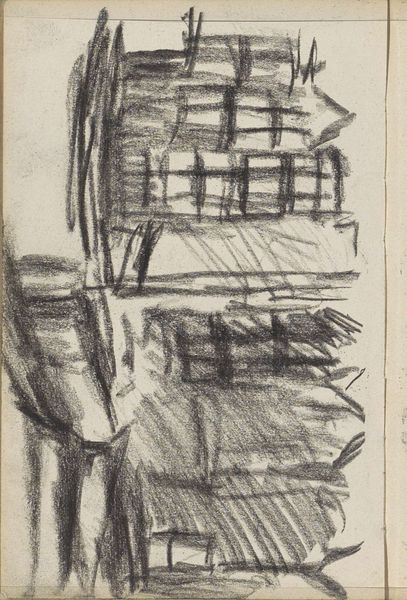
Nieuwe Kerk te Amsterdam, gezien naar de Gravenstraat c. 1886s
0:00
0:00
georgehendrikbreitner
Rijksmuseum
drawing, pencil, charcoal
#
drawing
#
pencil
#
cityscape
#
charcoal
#
street
Copyright: Rijks Museum: Open Domain
Curator: Here we see George Hendrik Breitner's charcoal and pencil drawing, "Nieuwe Kerk te Amsterdam, gezien naar de Gravenstraat," dating to the 1880s and housed here at the Rijksmuseum. Editor: There's a raw, almost haunting quality to it, isn't there? The charcoal lines feel so immediate, capturing not just the scene, but a mood, an era. I am trying to imagine what Amsterdam looked like during that time, when industrial revolution transformed not just the streets, but social class differences as well. Curator: Absolutely. Breitner, who's sometimes called the 'painter of Amsterdam,' had a particular way of seizing fleeting moments in the city's evolution. Note how the grandeur of the Nieuwe Kerk—the New Church—is rendered almost like a skeletal frame through dynamic lines, hinting the eternal struggle between church and community Editor: The architecture dominating the drawing also tells a lot about social and cultural landscapes during the end of 19th century in Amsterdam, in general during Dutch Colonial times. I wonder what did the relationship between The Church and colonialism look like back then? The quick strokes add movement, almost blurring the architecture and hinting how everyday life evolved surrounding the main buildings. How did the role of the Church influence race, class, and social power at the time? Curator: Breitner focuses on recording an urban present rather than portraying the church in its conventional symbolic manner. There are street level objects and human activity that distract the attention from what usually represented religion in fine arts. I also perceive that choice as loaded of intention, in the social landscape you were mentioning. Editor: Exactly! There's this constant play between documenting reality, like an proto-photojournalism, and infusing those quick renderings with this implicit social critique. As simple as this charcoal sketch is, it is able to portray such broad scenarios that influenced and shaped not only Dutch society but its relationship with colonies across the globe. Curator: Breitner gives us this sensation of seeing what is decaying or about to disappear through the passage of time. And yet, buildings remain while people disappear through their absence of depiction. Editor: And that ephemerality is what makes this piece resonate. Curator: It is thought-provoking in terms of social studies!
Comments
No comments
Be the first to comment and join the conversation on the ultimate creative platform.

